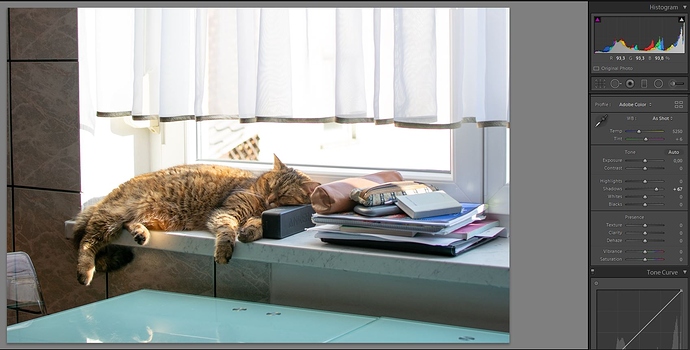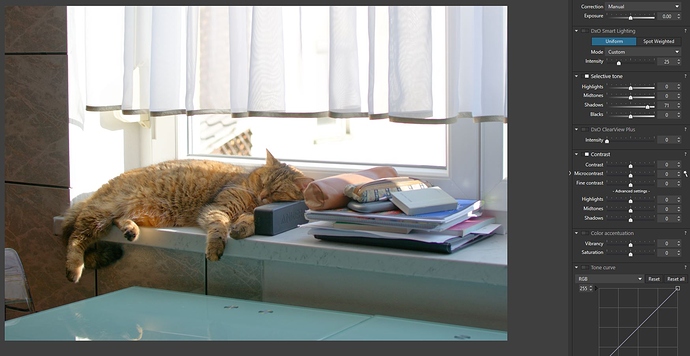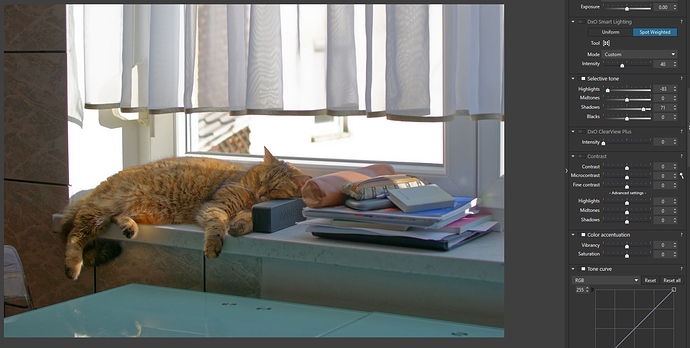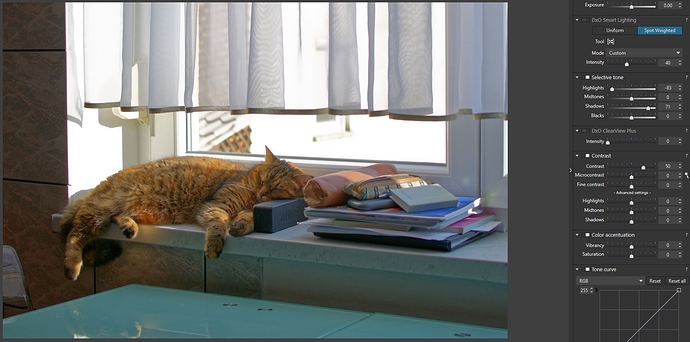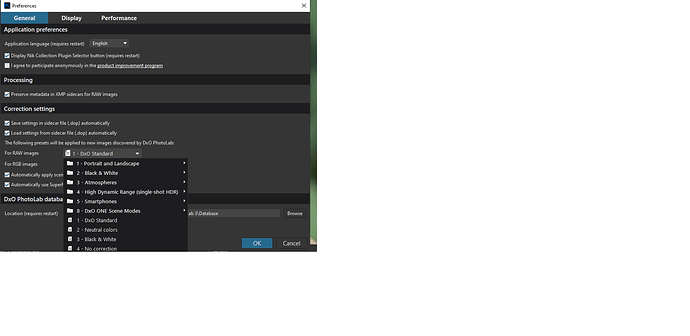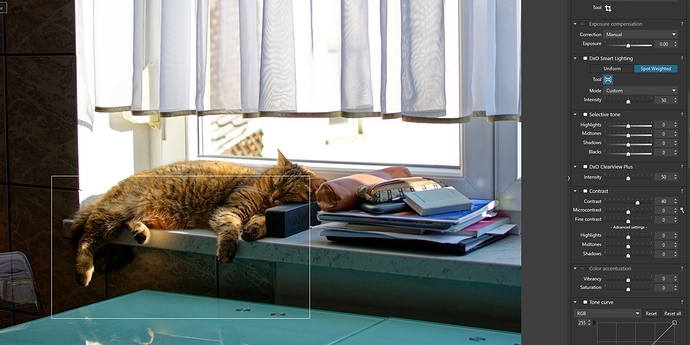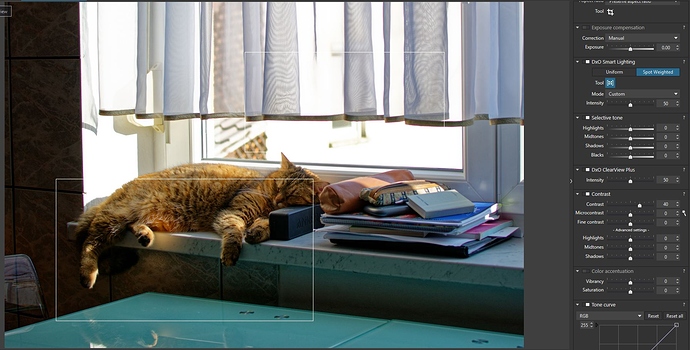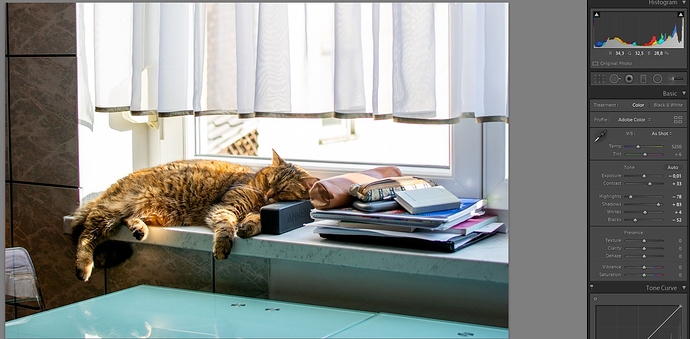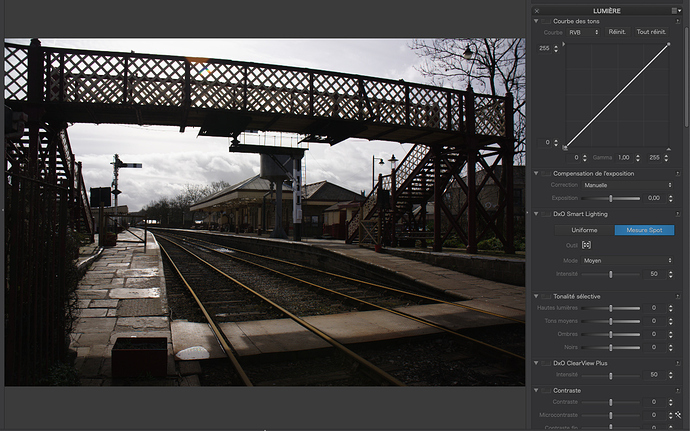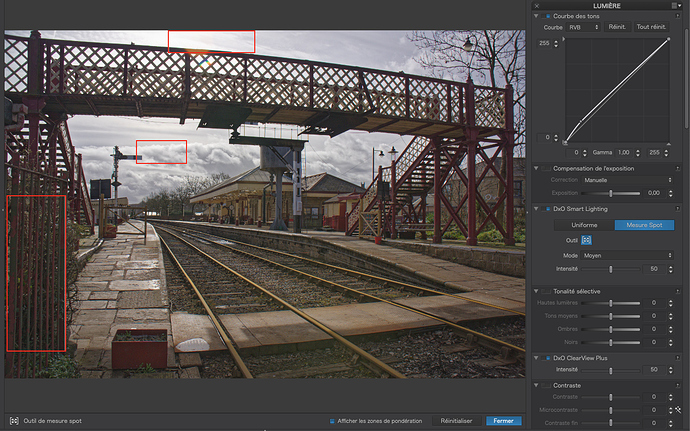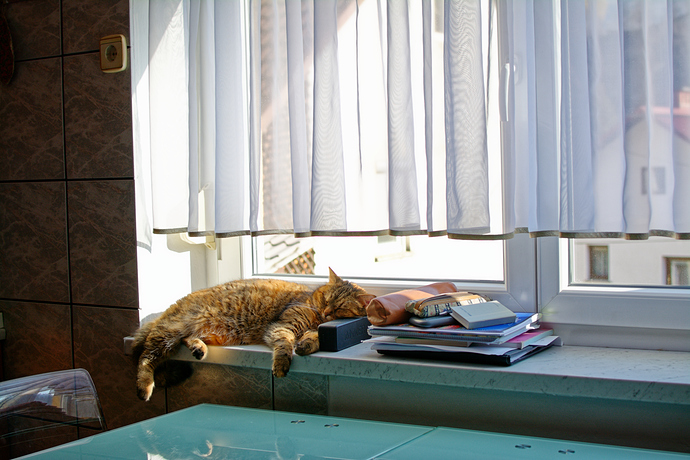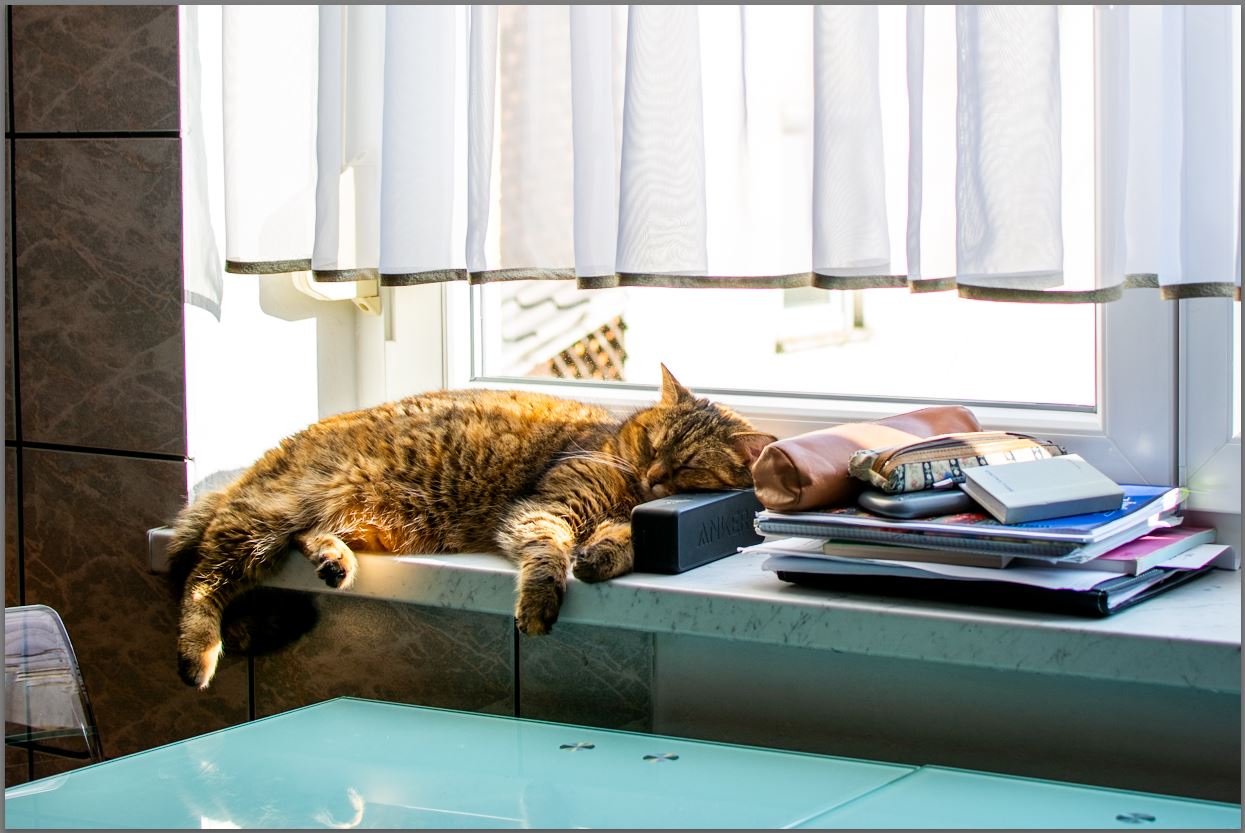First I need to thank you all for your answers.
I will also try to answer all your questions and suggestions.
I have lens Sharpness always ON. The thing is you just can’t see it because I posted printscreen and DxO shows sharpness only at 75% or more magnification.
I find this odd. I would like to see sharp image when the image is ‘’Fit to screen’’ in DxO window.
My last attempt was to adjust Smart Lighting and Contrast but results were similar – check the last two images I posted.
I have my own preset in preference tab – No correction with Lens Sharpness activated. When I open new RAW file my preset only adds Lens Sharpness. Then I look at the RAW file as it is and then I decide what to do.
And yes; if I apply those DxO presets I can see the changes on my photos but those presets are not what I’m looking for.
Yes; I agree. Lightroom is adding something to my RAW files. I just haven’t figured it out what it adds and how to get the same in DxO.
For example; check the first two images I posted. I only moved Shadows slider to the right. In Lightroom shadows opens but my cat does not loose contrast and you can clearly see those black stripes on the cats body.
If I move Shadows slider in DxO the image goes flat and my cat is without contrast. If I want to compensate this with Blacks slider then all image goes back to dark because Shadows and Blacks sliders have almost the same effect.
If I try to compensate with Clear View plus it homehow helps.
And here is odd thing; if I use Texture in Lightroom it somehow calculates by itself on what things to make effect – high effect on contrasty things and low effect on things without contrast like white smooth surfaces and similar. If I use Microcontrast and Fine contrast in DxO ALL image is affected no matter what.
John-M; Thanks for the answer and suggestions.
I think it’s natural to compare tools designed for the same job. I have three plunge routers for my woodworking and I compared the results so I use one router for dirty jobs (it has some play in the pillars) and the other router for more delicate jobs where I need to do more precise work and my third router is under the table because it has the best hight adjustment. They are designed for the same work – to do some routing of wood but I can not get the same end results with all three routers.
I hope you all understand what I’m trying to say.
Whenever I write to this forum I get the answer ‘’don’t compare DxO with lightroom’’. Why not? They are designed for the same work. I use Lightroom for years so it makes sense to compare and my goal is to get the same results in DxO in about the same time.
If I want to get rid of Lightroom one day I must be sure I can get the results I like with DxO. As I see Lightroom is doing lots of work ‘behind the curtain’ so I don’t have to do.
OK; so below are three results.
The first image – I draw a box on the cat and on some shadows below the cat and moved the box around
Second image – added Smart Lighting box also on the window
Third image – Lightroom – I did ’Auto settings’ and then moved Contrast slider to the right, Hdadows slider to the right and Blacks slider to the left – 5 seconds job.
Can you see how the image shines and DxO image is dull?
I don’t know what else to move in DxO to get the same result.
